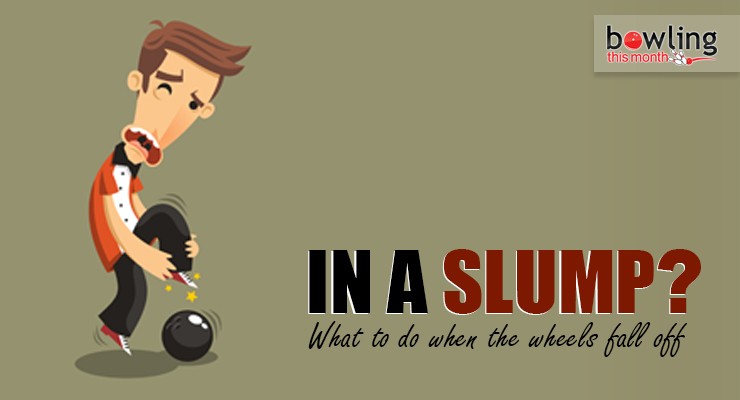Article Contents
- 1. Time to change
- 2. The set up
- 3. Footwork
- 4. Is it really a slump?
- 5. Back-To-Basics Bowling
Note: This article is only available to Bowling This Month subscribers.
In its simplest form, bowling is not too far removed from cavemen rolling round rocks knocking down sticks. From the time we realized there is more to bowling than house balls and rental shoes, we have worked to develop our skills to the point that we are happy with the results.
Whether our definition of “happy” depends on our current league average or tournament successes, most of us at one time or another have experienced a bona fide slump. Often a slump is accompanied by the feeling we have never bowled before, at least not successfully. The following suggestions are recommendations about what to do when the wheels come off.
Time to change
Whenever a slump rears its ugly head is the perfect time to review the basics of bowling. In a majority of cases, the feeling of being out of whack during a slump is the result of some change in timing. Timing is a simple concept. It’s the position of the ball in relation to the ankle of the slide foot as it reaches the line.
Timing varies greatly. The USBC recently changed their “official” terminology to describe timing; ostensibly to remove any negative connotations that people may take from the terms (how I hate political correctness!). While the new terminology: roller timing, neutral timing, and leverage timing may spare the feelings of some bowlers, the old terminology is certainly more descriptive. Early timing is when the ball gets to the foul line ahead of the sliding foot and late timing is when the ball gets to the foul line behind the sliding foot. While the terminology may suggest that neutral timing is preferred, in fact a bowler’s ...
Already a premium member? Click here to log in.


